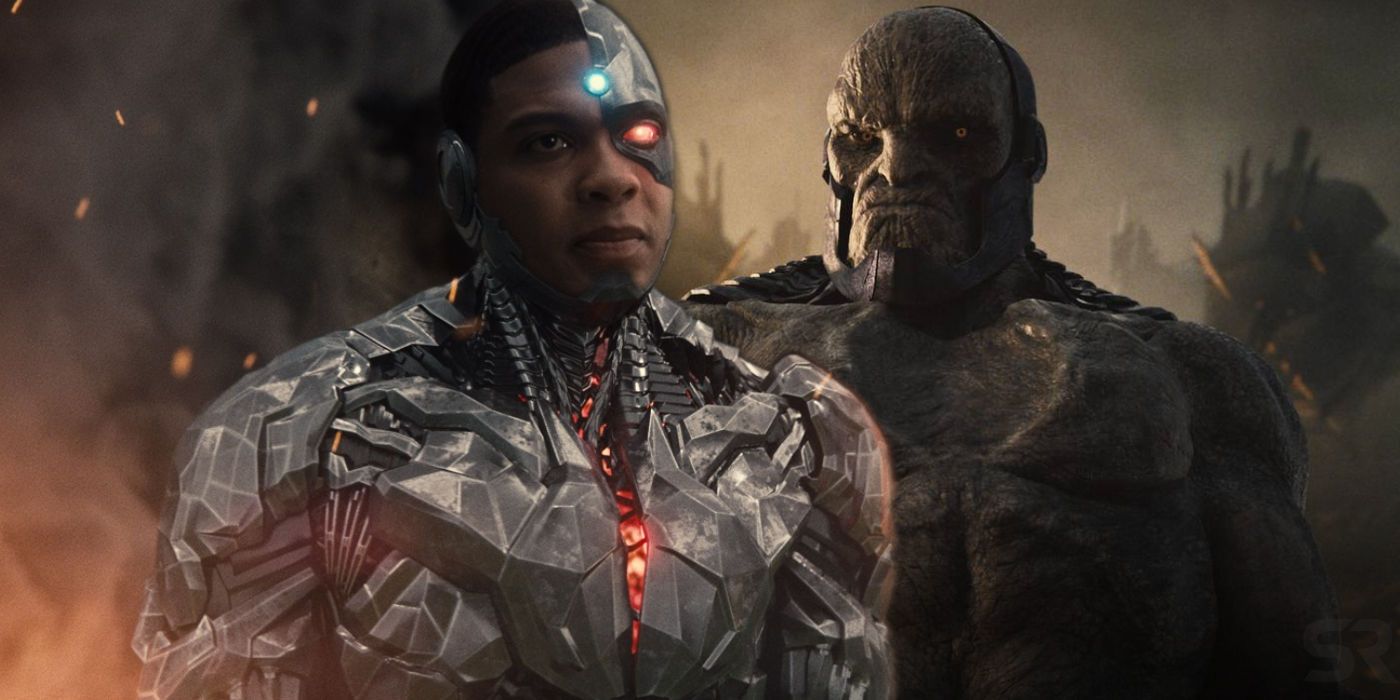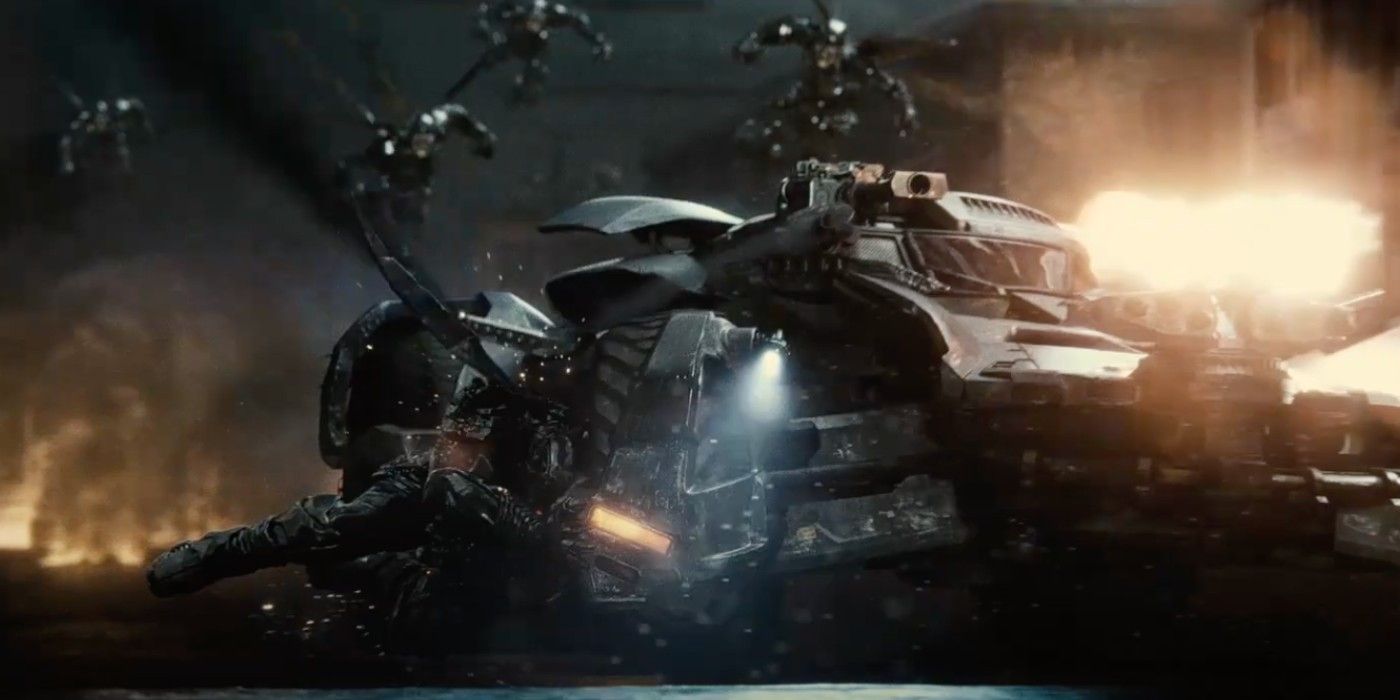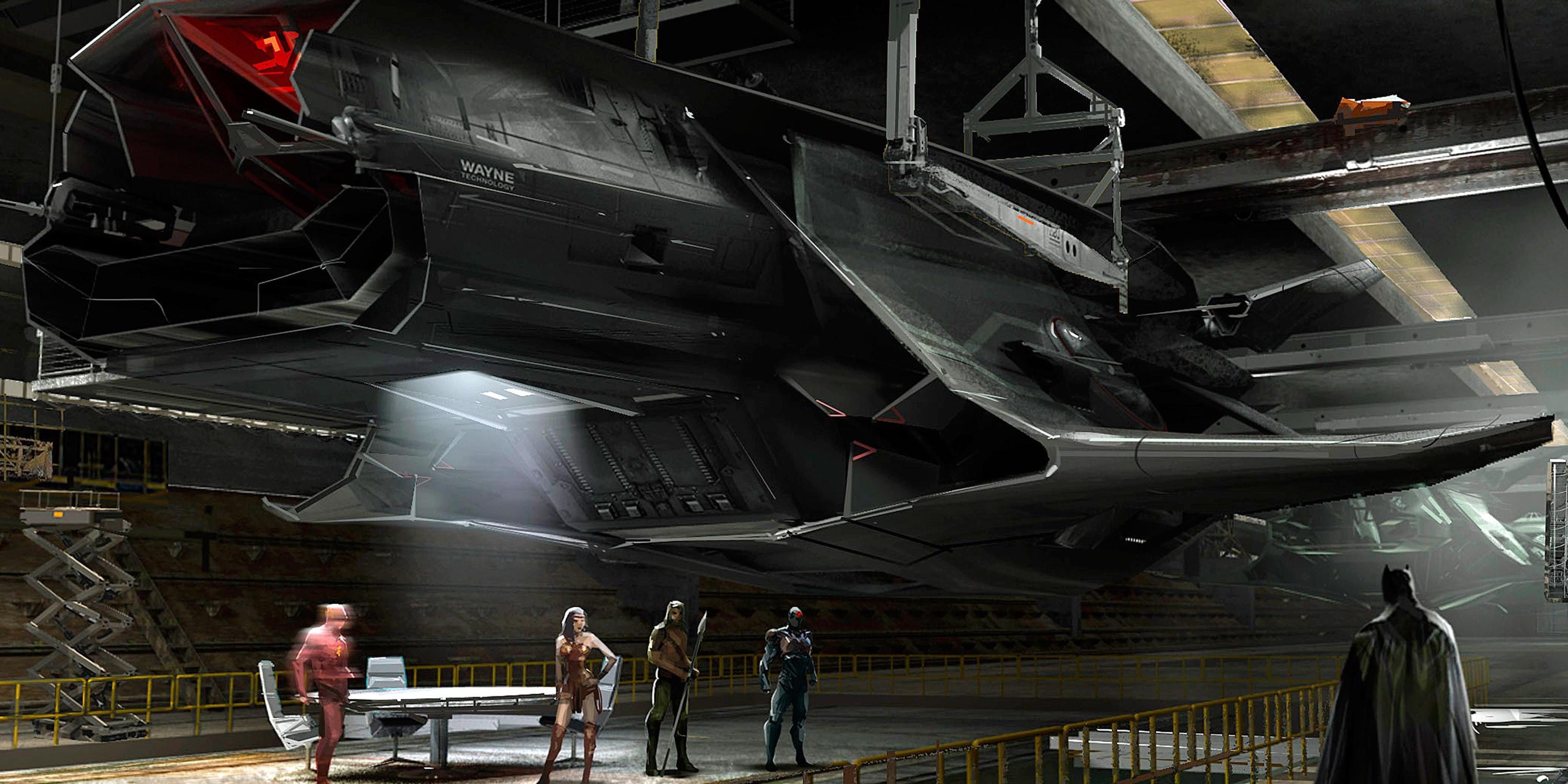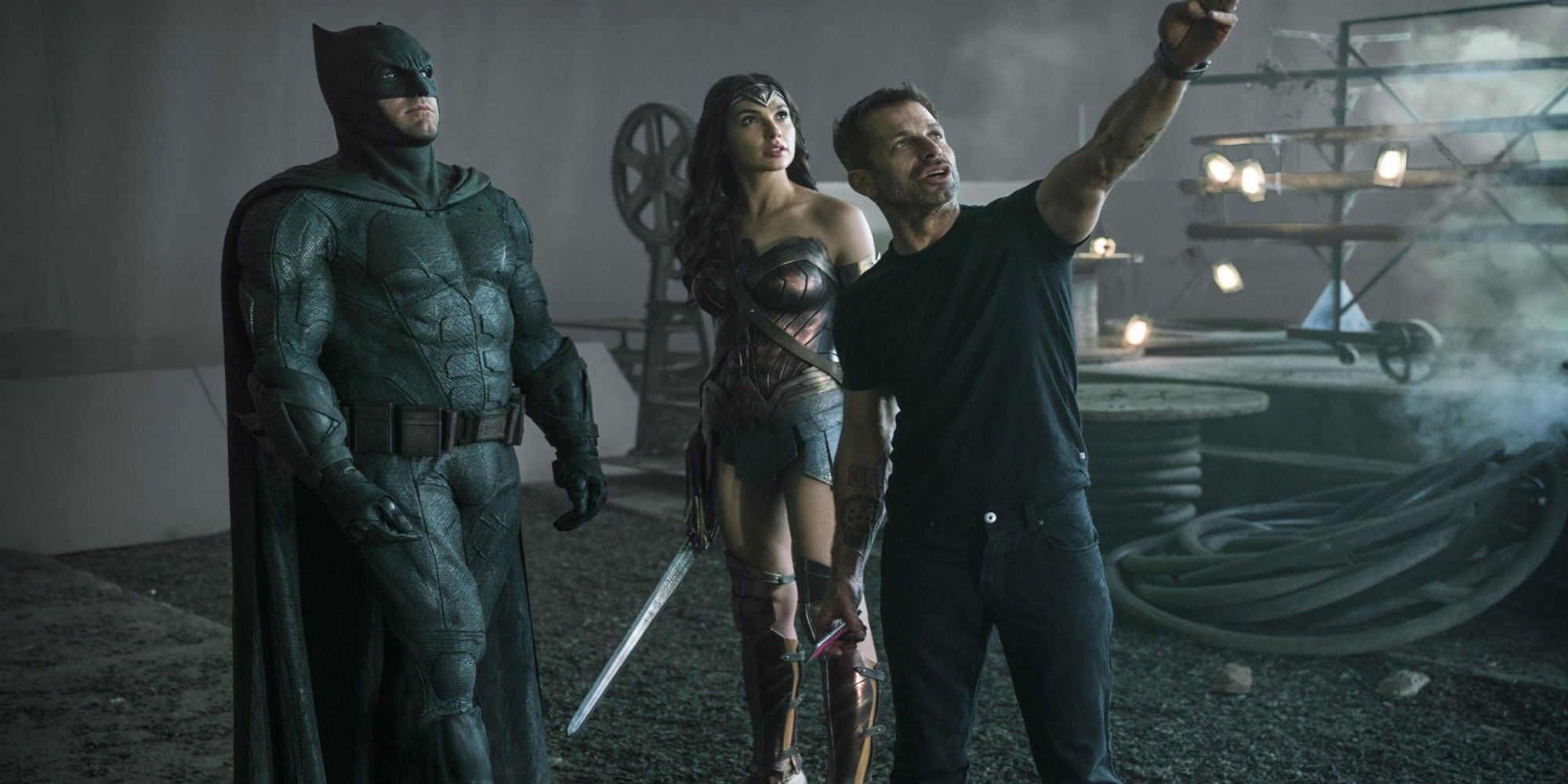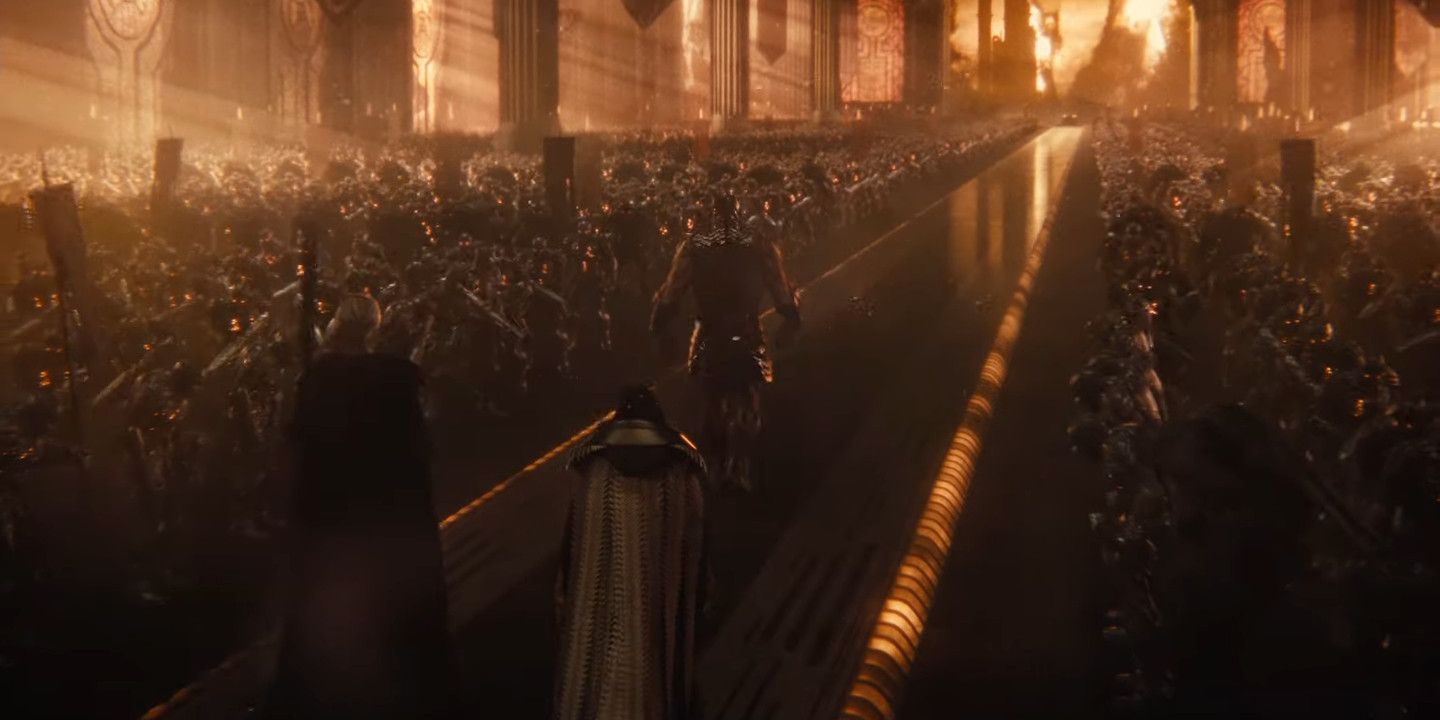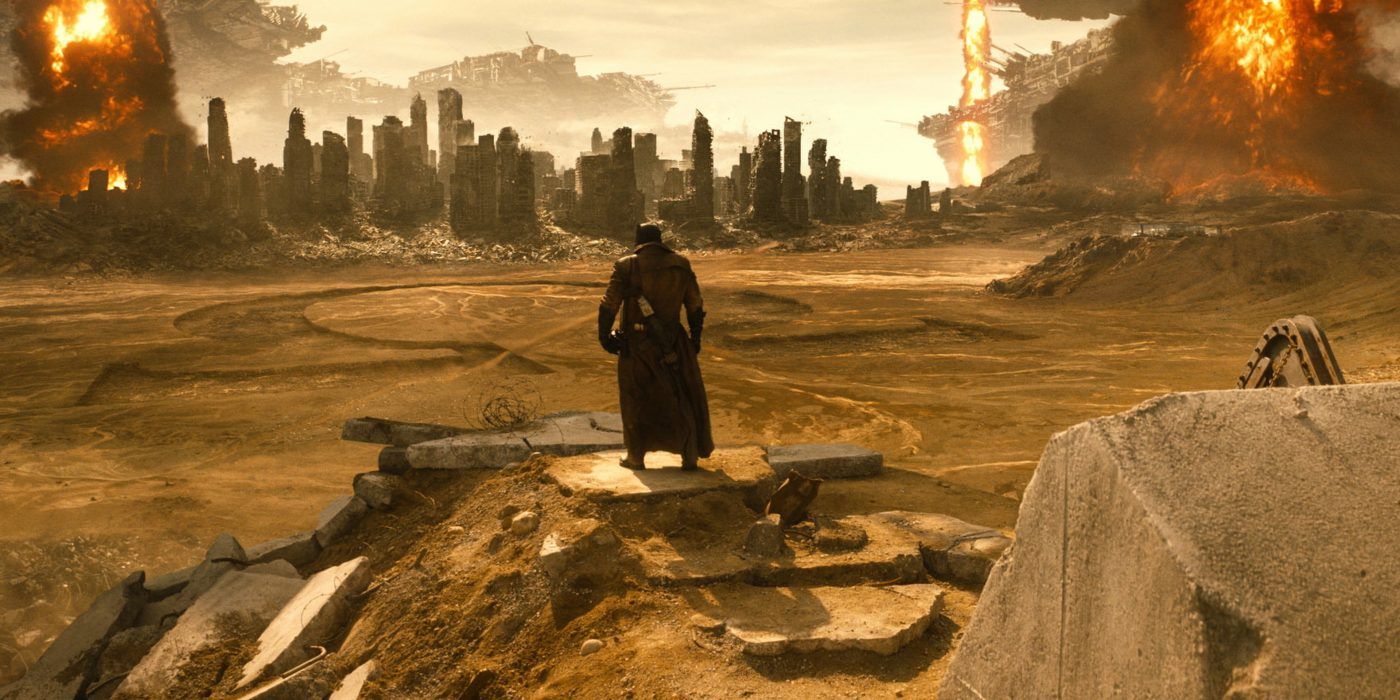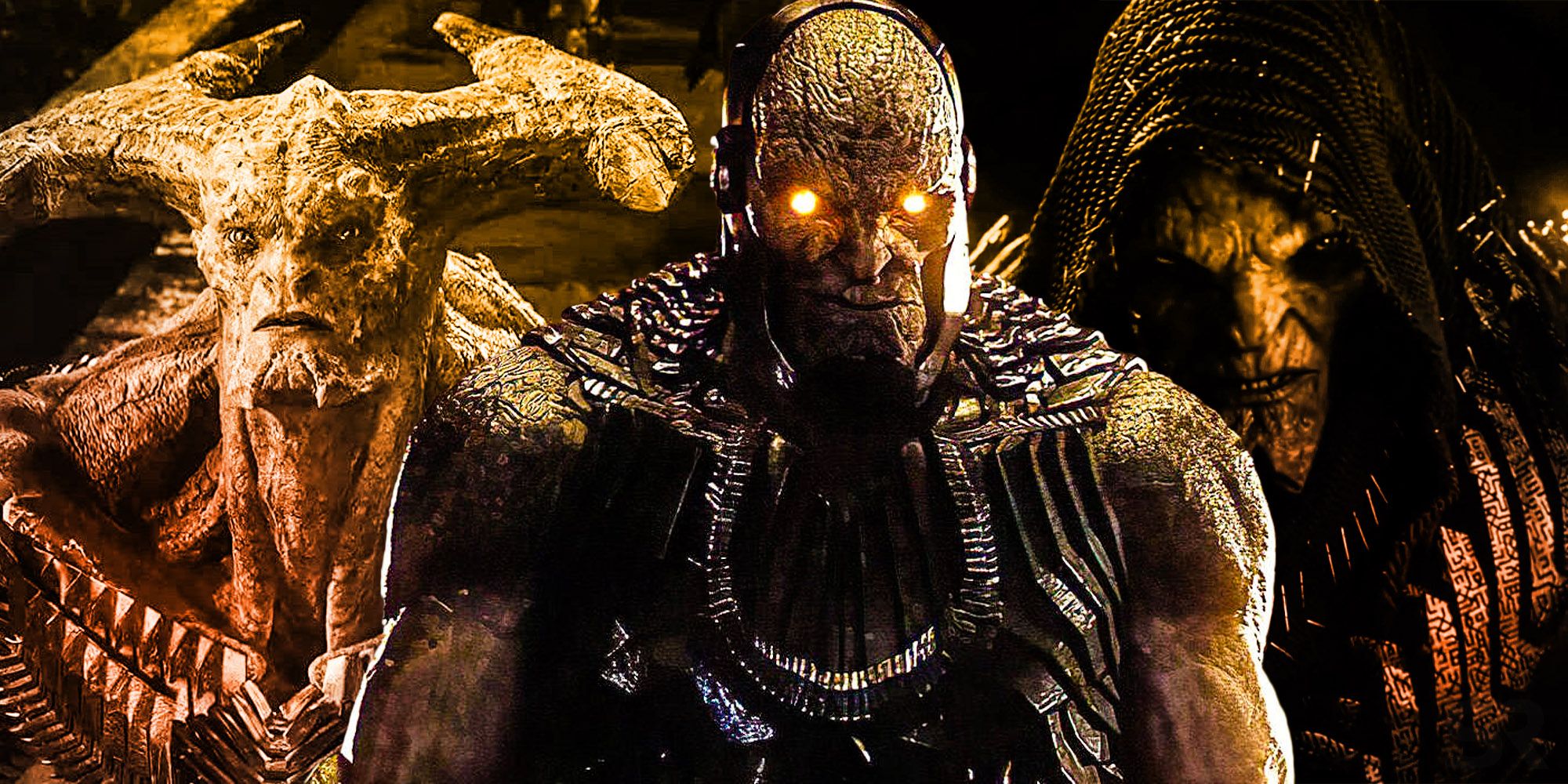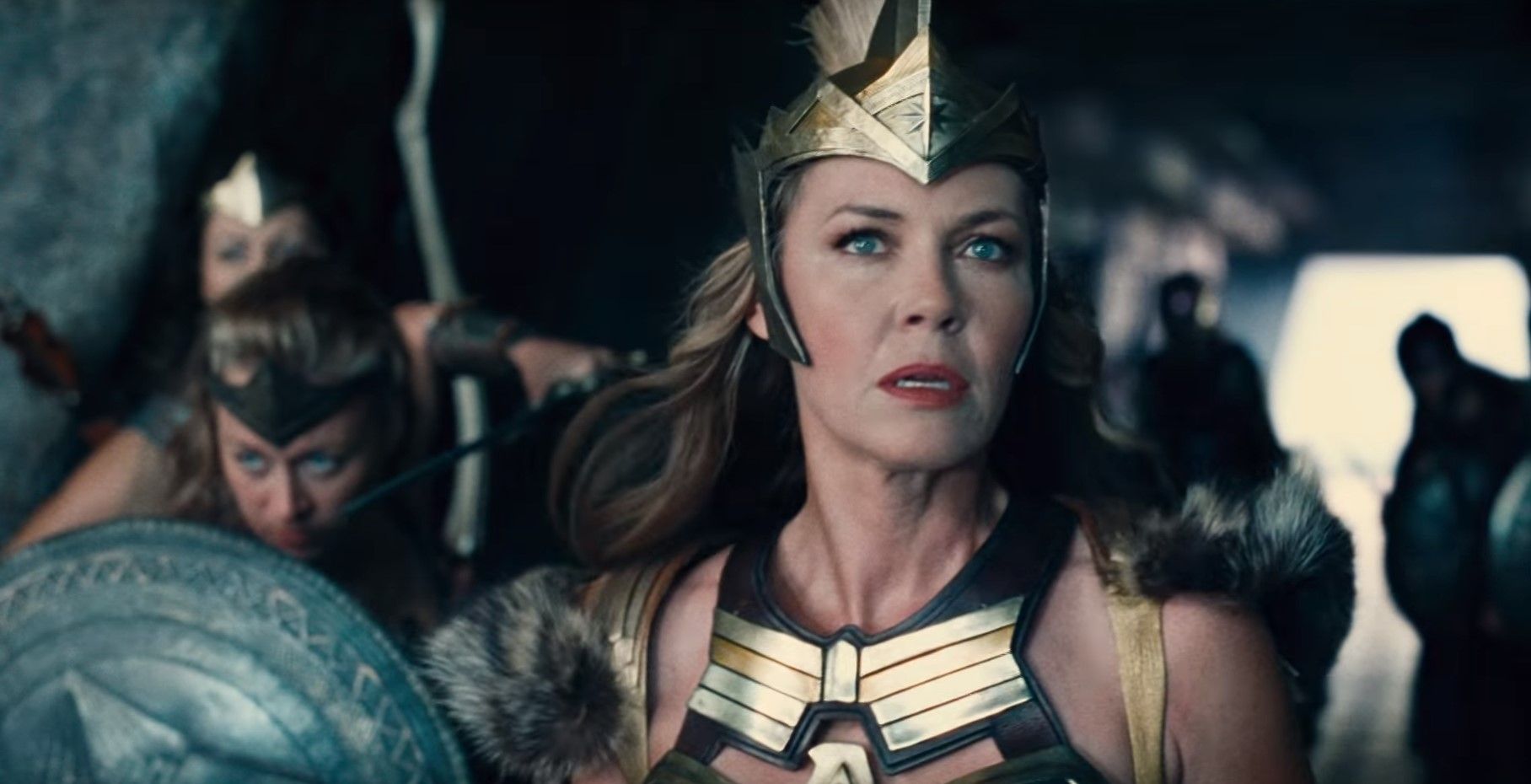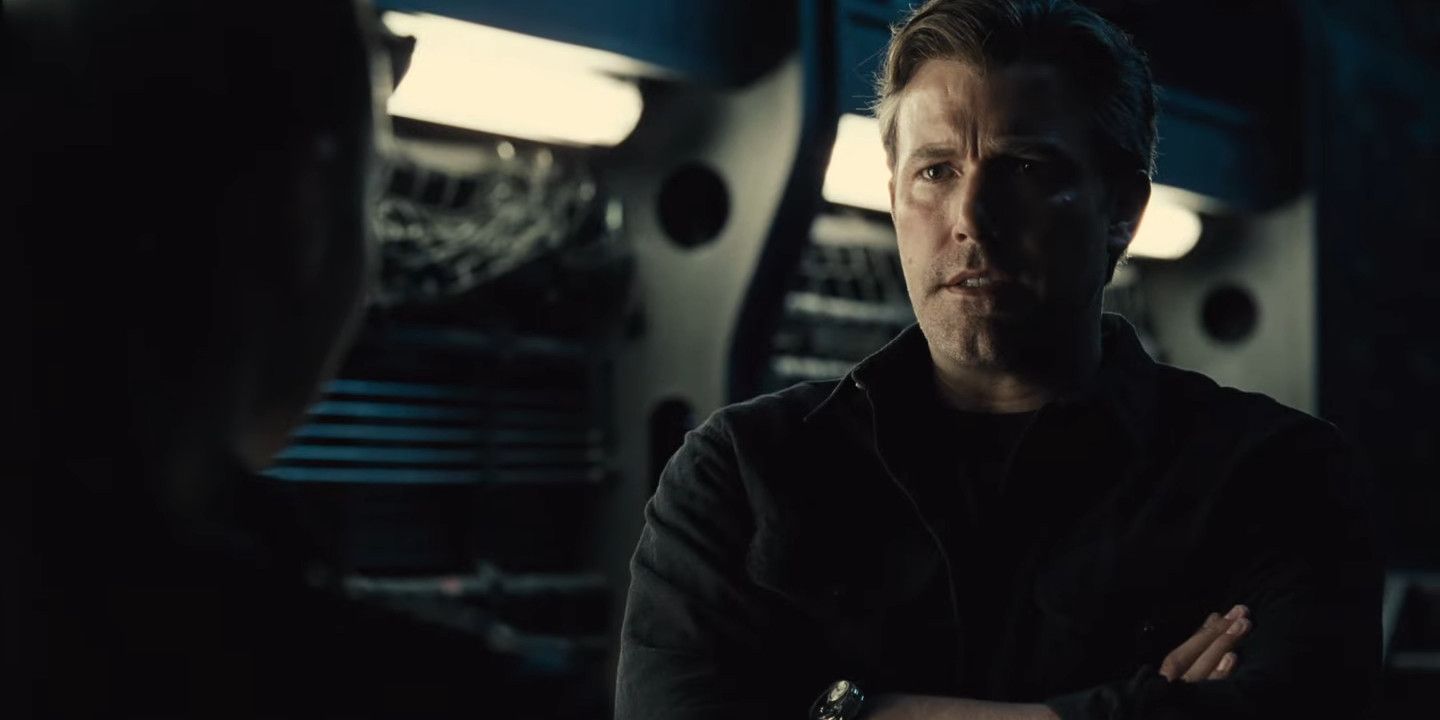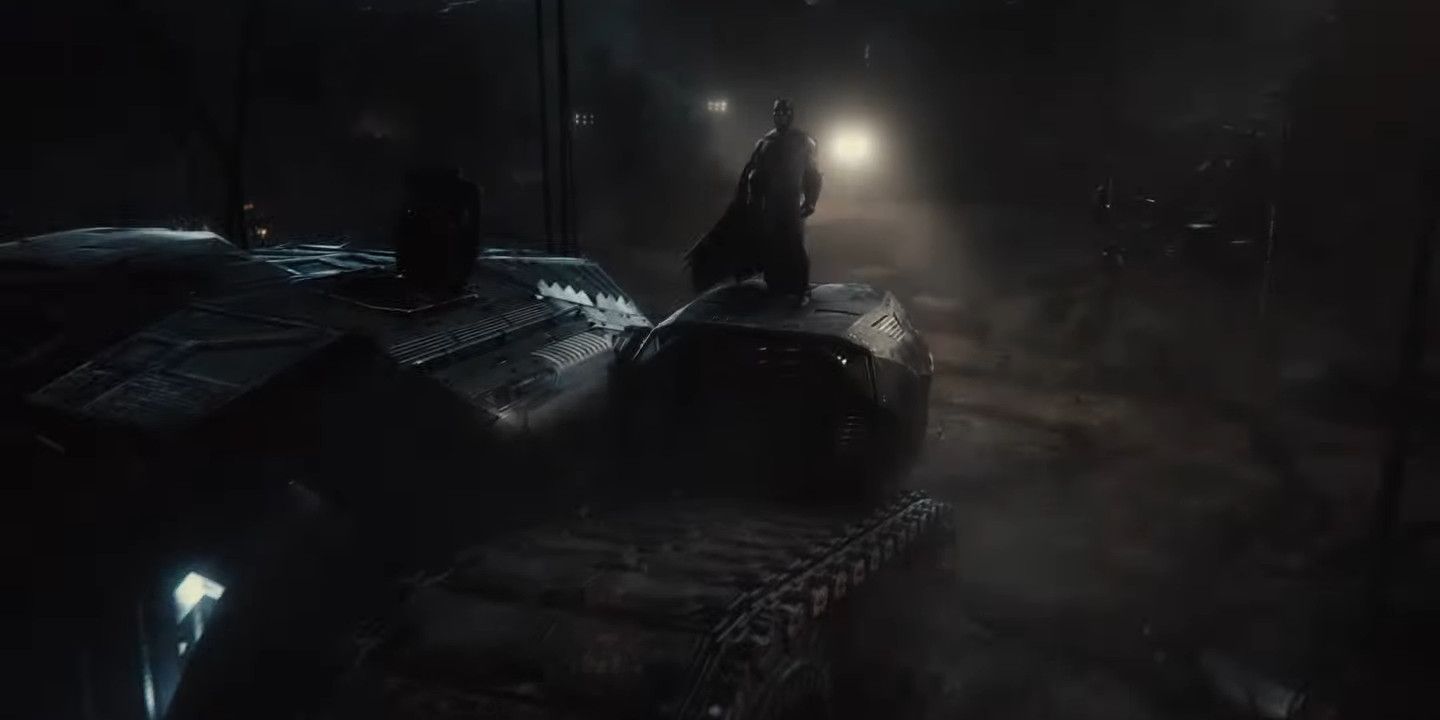With the release of Zack Snyder's Justice League, fans of superhero blockbusters are finally getting to see what the director's grand story was building towards. And for the cast and crew, it means a chance to show the world the true scale of their world-building, mythology, and expansion of Snyder's world.
For production designer Patrick Tatopoulos--who previously brought a new vision of Bruce Wayne to life in Batman v Superman--the job couldn't have been bigger. Forget creating a Batmobile, a team-up this size requires a Bat-troop carrier to carry the League into battle. And after offering a glimpse of the Parademons in Bruce Wayne's Knightmare, only Snyder's cut of the movie reveals the horror of Darkseid, Desaad, Steppenwolf, and the hellish Apokolips from which they hail. Not to mention a few extra secrets behind the technology on display in the finished film.
Screen Rant got to ask Tatopoulos directly about the challenge of Justice League, the new looks at existing worlds in DC's movie universe, and what the future may hold for Zack Snyder's epic series.
Screen Rant: You helped to create a new version of Batman, along with the entire world around him, in BvS. With Justice League you face a combination characters continuing forward from BvS, along with the most outrageously different and brand new aspects, as well. What was the goal with Batman's evolution?
Patrick Tatopoulos: For me, it was like you see another side of him and you see more of him. In creating this worldview, what we do is just the expansion of what you discover about what he is. I think all those elements we have created on Batman Vs. Superman, as a designer, come back in a sense. But you discover more, and you can build a larger and bigger picture. The thing about the design, for me, is you really can clearly tell that there's a bigger picture; there's a bigger combat and a bigger fight coming. When we start getting into the hangar, and you see the Flying Fox, you see all the tools he has to battle. You know he's going to war.
For me, it was the biggest thing is to say, "The Batmobile has been used in Gotham and battling the villains and gangsters and whatever he's fighting." Suddenly, he's fighting against forces that are way beyond. Doomsday was something, but now there's much more coming. Batman had to change, in that sense, and what I do is to create bigger weapons; stronger weapons that take him further, and also weapons that are made and created for a bigger team.
The Flying Fox is a big craft and was designed around the idea that this is not meant for Batman to cruise around; it's meant for the team together. This is their craft; it's the Justice League's craft. And that was fun, because everything you do is about all of them and not just about him anymore. It's got the signature of Batman; his style and aesthetic that we carried on and pushed forward. But, now it's the next level.
For the idea of war, the Batmobile tells you everything. You don't need cannons of that size when you battle in Gotham City. I don't believe you do. But once you go to battle parademons, it's a different story.
SR: My favorite bit of trivia from BvS is that the first sketch you drew for the film was the Batmobile, to get across the idea of who this Batman really is. He is his incarnation of the Batmobile. Was the Flying Fox that same kind of symbol for Justice League?
Patrick Tatopoulos: Yeah, it is definitely the same thing. It's an expansion. It's like, "I'm a single guy, and I move along in my car thing. Suddenly, I've got a family, and I need a minivan." The idea of the Flying Fox is his father's, that he developed for a military purpose. One of them was almost partially built, almost finished, and he just had to adjust and fix it. But the idea is between the two movies Batman has decided he knows what's coming his way, and he's starting to reactivate things. Part of his world that he hasn't used, because there was no need for him.
And the aesthetic of it, the Flying Fox to me still had to feel like the Batmobile. It's interesting, the Flying Fox existed before the Batmobile, in a sense. Because it was created by his father, before Batman and his own Batmobile. And I like the idea that the Batmobile, in our storytelling in Batman v Superman, was seen before the Flying Fox. You can tell the influences of his father, if you may.
The Batmobile sort of makes sense in a reverse kind of concept. You see the Batmobile and then, "Oh, this is the craft. Those are the crafts that his father had created." And now you see the child, the son, and the father. And that's why it's so important that you feel the legacy between those two things. Those are elements that are not immensely significant for the audience to watch, but they are there, and you sense it. And I hope it comes through.
SR: That is the kind of stuff that the audience can never really appreciate. With production design, people see 10% of the work that you end up doing. In the finished movie, how much of the time goes into that narrative, especially with a director like Zack and a writer like Chris Terrio, who seem to be incredibly anchored in characters?
Patrick Tatopoulos: They are. This process, how many things are you saying that the audience is not aware of? Do you know how much we work with backstory? How much we work with future stories; potential future stories? Because you create something, and we keep talking vehicles, but there's the bat chain, for example. Those things have to expand across, hopefully, multiple films. And when we think them out, it starts with the characters.
The reason I did the Batmobile first with Zack was because, when you start tackling the world of a character as strong as Batman is and with such a specific aesthetic that you have to create, you start with a small thing. I could have started with one of his grapple guns, but I started with the Batmobile because I like cars and motorcycles myself. I first sketched the car because when Zack told me it's bolder, it's big - it started to feel very bold, aesthetically speaking. A guy whose shades are strikingly simple and powerful.
So, that's character, and character translating to the things that he uses; the things that he likes. For me, it was easy to go back - or not easy, I was lucky that I apparently nailed it. I went to a coffee shop and drew the Batmobile. Once he told me, "Wow, that's cool. I like it." I understood that the aesthetic of the Batmobile could carry across to other things, and it became the steel and concrete of the Batcave; the simplicity of the shades. The fact that it's something that changes, like the Batmobile can raise itself or lower itself.
And then that aesthetic goes across the glass house. Again, if you look at the glass house and the Batcave, they're similar. It's based on the Mies van der Rohe glass house, but that fits are extending across the border. So, that's that's where characters initiate a spark, and all those things you're talking about when we talk about storytelling, that's how we start. And you don't tell the audience; the audience hopefully will say, "Wow, that thing looks freaking cool." Maybe it does look good because it makes sense in context.
But there are people like yourself, and regular audience who want to know more, and you want to make sure you're ready to tell them the story when they ask you. If people say, "You did this, nobody's gonna ever care," I agree. But if someone calls one day and asks me the question, I'd be so happy to answer. And Zack would be the man to go to with that. Even at our level, the costume designer and myself, you have to be able to say, "Well, this was done because of that." Then people are like, "Wow, really? Well, that's cool." You have to do this with superheroes.
SR: When you're bringing in Apokolips and Darkseid, and giving viewers a glimpse, was there an analogy or one idea that helped it click? Or when you're dealing with creating a new world in sci-fi fantasy, is that even possible?
Patrick Tatopoulos: Well, the challenge with that was the time. You don't develop something like that usually in that short a time. Because this was not part of the first movie we did. I mean, it was underlying, and the Anti-Life Equation was definitely a part of the film. And that's when we start seeing that technology and see the craft. If you remember seeing the craft on the Justice League, some of that was also Zack developing that for his movie, obviously.
When you start seeing an aesthetic like that, you know it's coming. Against the Batmobile for the Batman language, those elements are used to being developed. To tell you the truth, it'd be amazing to even go back to this and develop them deeper. We see great moments, but we haven't got a whole movie about Apokolips yet. You've seen glimpses; they've got to be impressive, they've got to feel different, they've got to feel powerful. And then there is the time where you're going to tell more, hopefully, in future films. You're going to tell more story of it.
Those are the hints that you throw out there, and this is all based on Zack, what he wants to reveal later in the future. All of us, we want more time to develop things sometime. Because creating a world from scratch - even Batman is not from scratch. Gotham is like Detroit, it's that kind of thing, where you see things to relate to. When you go into the world of Apokolips, it's just not human anymore. There's not much to connect to.
And I know in Zack's vision, this is only going to expand further if he's getting the chance to do more films. I know he's got an already huge plan in his head, and that went back to the time we're doing the Justice League film. When we were shooting, he was developing the trilogy of that. So, you just jump in and start creating this world, knowing that you have so much more to create and develop in the future.
SR: When I think about it, the vision of Apokolips, the Parademons, Steppenwolf - all of this stuff people are talking about from this movie - that was in Batman v Superman.
Patrick Tatopoulos:: That's the genius of Zack! It was a dream sequence, it was a nightmare. It was not Apokolips; you saw a beast and creature of a bigger language that you're not gonna see on that movie. I designed a parademon, that was one of the creature I played as a designer and was really having a blast with this, because ideas of things like this. You're going to hint at them without having developed the whole language of the world.
I'm sure Zack something in his head clearly. And if the parademon I had done was not working for him, he would have told me, "That doesn't fit what I think." But it did. And it is because, I don't know why. We're kind of lucky, because again, at that point, I certainly myself didn't have a vision for Apokolips at all. But that's the way movies are, and I think at the end of the day, there's no way you know. That's why you have a director. Because maybe not everything is revealed in the first movie; maybe you only get a glimpse at something.
But I think at the end of the day, he is the only one who's got it all in his head, even if his costume and his VFX people are grabbing onto his ideas, his concept, and we shape up something. But he knows where he's going, and that's what matters at the end of the day. Because when he ends up having a chance to finally finish his movie, these ideas is already in his head, and they come and develop faster.
SR: Do you approach that differently, if you know that this is a tease? Like the Steppenwolf design, does that come from Zack's existing vision, or is that from wanting to imply something bigger in his world in these moments?
Patrick Tatopoulos: Again, when we're talking about the characters, those characters are often created before their world is created. As an example, when I did the movie Stargate years ago, I designed the warriors' helmets. That was my job, and the director found the helmet and aesthetic and texture that he liked very much, and he actually ended up asking the designer to develop them into the sets. Sometimes a character defines the aesthetic of the world, especially if you're in a position to reveal everything in the first movie.
When we were doing Justice League, we didn't really develop Apokolips at the time; it's been developed recently, with all the work that's been done recently. But those characters were already happening and being developed. And the character is at the base of the environment. If you grab something from a certain environment - I grab a fish, and I know it's coming from the wall. If you grab a creature or character, he will in himself define the environment he's in. That's costume, but those beings are not costumes - that's who they are. And who they are defines where they come from.
Unless we knew from the beginning Apokolips was in the movie to that level, and this and this, we would have started to create the world and elements of the world; texture and aesthetic. But that was not the way it worked out. Back then, it was characters - even characters we thought would never appear or weren't sure - and then it all came together. This is insane, how much happened in that what we would call the post-production return Zack, and making these visual effects over. There was so much done.
There's tons of stuff that we shot with Zack that never made it to the Justice League film. To me, it was great to see that they came back, because they were very meaningful. There's a bunch of that; there was the materials that Zack shot, which was very different from what you saw in the movie - actually totally different from what you saw the first movie. All that stuff came, and it was a lot of material. Plus all the stuff you discover from Apokolips which was now created from scratch.
SR: On the on the flip side of that, you have the Amazons and Themyscira, where the idea was in place. And this sequence is set apart enough from the rest of it to show a different side.
Patrick Tatopoulos: Very good point, because that was obviously extremely intended. Wonder Woman was getting finished, and I think they were waiting to cut. But the thing is, Zack wanted to show something else; he wanted to show another part of the world. That happened with Themyscira, and it happened with Aquaman as well. Aquaman hadn't started, but we took a decision, and maybe James actually did it the opposite way; this idea that we're gonna look at the other side.
His vision was quite different, but not different in a sense. Because for Themyscira, as you said and rightly so, we created a portion of the island which is much more abandoned; which is a part of a temple and resides within the ancient period. It's a different era of Themyscira, if you may. Then Themyscira the way you see it on Wonder Woman has been created from scratch for the movie, and we didn't have to conflict. We didn't have to be seeing the same stuff. We found a way to do this.
And Aquaman was the same deal. We were in the ancient part of Atlantis on our movie, which was fun to design and create. We did much more than you end up seeing, as always, but always certainly based on the past because that's where the story was taking us. Aquaman, when the movie was released, you could tell that the world is almost like a science fiction world underwater. It's all kind of fantasy science fiction, and it's bright, and it's vibrant, and it's crazy. We were more into the ruin of the ancient part of the world. So, it was great to be able to define an aspect of those words as a designer.
When I look at all the superheroes, people say, "Oh, my God, you created the world for all these heroes." I created glimpses of these words for these heroes. We didn't attempt to define the whole world, because we knew those movies were already done or happening, though nobody had seen them. So, I think that was the right way to approach it. I felt like Zack approachd it the right way, in the sense that he could still make a movie with his own aesthetic. And also look at Aquaman, you see him outside of the water too, in his village. We don't really see the lighthouse.
I remember designing the lighthouse at one point; it was potentially being seen. And then it didn't match what they were doing an Aquaman; they had a different vision. Of course, you don't want to compromise a full feature just for lighthouse on the corner, where it was less important. But it was a very unique situation, as you highlighted. I think Zack's approach was the perfect one, where he could create things, elements, moments, situations, sets and worlds that will not be seen on the other film - but not conflicting with them as well. It's part of the same story.
SR: Zack has this great big story, so if he got the opportunity to do it, would you be one of the people that on day one are saying, "You have to you have to let me do this. You have to let me follow up on all these things that we built?"
Patrick Tatopoulos: Are you kidding me? Of course! I mean, we all of us have done other movies and others features. I gotta say, I worked with Zack before Batman V. Superman. He was not the director, but I did the second 300 movie. Debbie Snyder met me and gave me the green light to be the designer of that project. So, it was great because at the end of that, Zack called me and said, "Hey, how about designing Batman v Superman?" I was like, "What? Is this the Man of Steel meets Dark Knight?" Is that gonna be this, because I would have said yes anyway. I want to work with the man, I don't care. But at the same time, I was like I hope not. He said, "No, Batman is our own Batman. We're creating it from scratch."
Imagine for the designer to be able to do that. We don't all get that chance of working a great big movie or great big franchise. But, come on, Batman. For me, Batman is my hero; he's my favorite one. He's always been and I think he'll always be, and little can come up that will change that. I'm a huge fan of the character, and being given the chance to step in at the early stages of the vision of the new director that's going to do this was incredible. So now, I don't want to give up. I don't want to step out. It's not my choice. He's gonna have to say, "Yeah, I want Patrick back." Hopefully, he'll feel the same way, but I'm here anytime.
SR: I know fans will be looking at that Bat Tank and be like, "Let Patrick make the whole thing!"
Patrick Tatopoulos: The Bat Tank, I can't take credit for that. The Bat Tank is Frank Miller's design. People asked me, "How did you design the tank?" And I haven't been responding to anybody yet, because I wanted to keep the magic. I have designed the other vehicle, but that one came and it's the Dark Knight Frank Miller thing, and what would you want to change on that?
The only thing that they told me when they built it, they said, "We used that design, and then we'll just give you the texture of what you had created for the other vehicle." So, it still is our language, but it is the design of Frank Miller. Which, hey, I love to be sitting next to him on the design side of things. It's not a bad place to be.
SR: You've got the Nightcrawler there, which is pretty cool in its own right.
Patrick Tatopoulos: Nightcrawler was an interesting story, because I was battling to get a motorcycle. I used to race motorcycles; I still ride motorcycle, I'm a mad motorcycle guy, and I wanted to get a motorcycle in there. I showed it to Zack, and he was like, "Yeah, that's cool." I had some great ideas - I mean, I feel they were great ideas. He liked the ideas, but I think he didn't see how you could use that thing. There was not really a purpose type. And he says, "What I need is a crazy kind of machine that can climbs wall, because I have this sequence."
So, I went on to the crawler, and my first though was, "I'll never get to do a bike for movie. Especially Batman, that would be my dream." But then thankfully he loved the crawler, and it became such a cool object. The way he climbs, the way the whole technology of those spears come out of the leg of the thing, and then the spread into the whole spear locking itself and pulling back. I love it. I'm really happy with this guy. It's a cool object.

